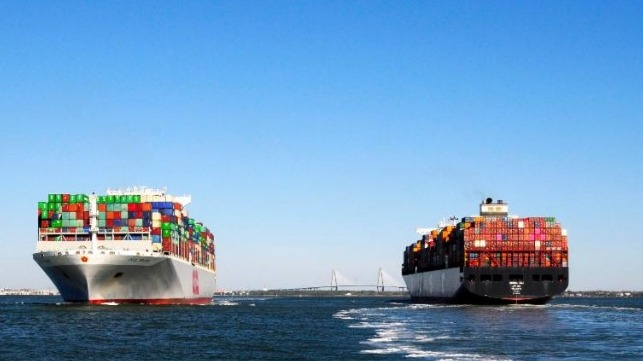BIMCO Calculates a Third of Ships Could Have to Pay Fees Under USTR Program

The U.S. Trade Representative’s port fee program is due to go into effect in less than a week, and with no more guidance having been issued, speculation remains rampant on the full impact of the program. The industry trade group BIMCO issued its analysis, pointing to the greatest impact on bulkers and segments of the tanker market, which it expects will leave the U.S. trade, but overall, it expects that freight rates should not increase for U.S. importers and exporters at this juncture.
The fee program was designed to combat Chinese dominance of the maritime sector. After U.S. trade unions filed a complaint, the Biden administration initiated the investigation and found unfair business practices and Chinese government support for its shipbuilding industry and targeting the maritime sector. The plan put forth by the Trump administration imposes fees on Chinese-owned, operated, or built ships.
The fees are due to begin on October 14, with previous estimates having said it could result in more than $3.2 billion in new costs for the top 10 containership companies in 2026. Carriers have undertaken the redeployment of vessels and swapping of routes in an effort to reduce their exposure to the program. BIMCO concludes, however, that containerships will not be the hardest hit segment.
“Bulk carriers are more exposed to the increasing costs, as 45 percent of the ships could be subject to the USTR fees. Because more ships are exempt, or because fewer ships are Chinese-owned or operated, only 30 percent of crude tanker and container ships, and 19 percent of product tankers, could be subject to the fees when arriving at a U.S. port,” says Niels Rasmussen, Chief Shipping Analyst for BIMCO.
BIMCO’s analysis of the program and deployments concludes that overall, a third of ships (35 percent) could be subject to the fees when calling at a U.S. port. BIMCO calculates that these ships provide nearly half (44 percent) of the combined capacity when including bulkers, crude and product tankers, and the container fleet.
The industry is still seeking clarification from the USTR on terms such as Chinese-owned and operated, but based on the current interpretation, BIMCO says 70 percent of the ships paying the fees will be Chinese-owned or operated. Only about a third (30 percent) will be Chinese-built ships. BIMCO notes that more than half of Chinese-built ships are exempt from the program due to size or U.S. ownership.
Other factors that could impact the final number of ships subject to the fees include efforts at refinancing or changing vessel ownership structures. One potentially significant category is the vessels in Chinese leasing programs run by banks and other institutions.
BIMCO believes the global impact on the bulker and tanker segments may be minimal despite 45 percent of bulkers and 19 percent of tankers likely falling into the definitions of the program. It points out that these vessels are a small part (9 to 19 percent) of global ship demand. Only 16 to 24 percent of U.S. imports and exports travel on vessels subject to the fees. Ships arriving in ballast for U.S. exports are also exempt.
“In the bulker and tanker sectors, we expect that most ships subject to USTR fees will leave U.S. trades as they cannot remain competitive. Freight rate increases will therefore likely be avoided in these sectors as well. Implementation confusion could, however, cause rate increases in the short-term,” says Rasmussen.
BIMCO writes that among the top 10 container carriers, less than 20 percent of the ships calling at the U.S. would be subject to the fees. Alphaliner previously reported that half of the fees would be incurred by Chinese carriers COSCO and its subsidiary OOCL (Orient Overseas Container Line). The carrier has previously admitted that it could incur large fees, but as said, it remains committed to its service.
Not addressed in the current outlook is the potential impact on the car and vehicle carrier segment. The USTR program imposes a fee of $14 per net ton on this segment for all foreign-owned vessels. This would be in addition to the tariffs the Trump administration has said it is imposing on foreign-built cars.
Customs & Border Protection warned this week that determining which vessels are required to pay the fees is the responsibility of the operators. It further said that ships should pay the fees online in advance, or could face denials when arriving at U.S. ports.
The potential remains high for confusion and delays as the program starts on October 14. Shippers might be attempting at the same time to rush imports into the U.S. from China before the current November 10th deadline, when the Trump administration’s delay on tariffs for goods from China is due to expire. Retailers have forecast that the combination of these factors is likely to contribute to steady, monthly declines in container import volumes over the next few months into the United States.
